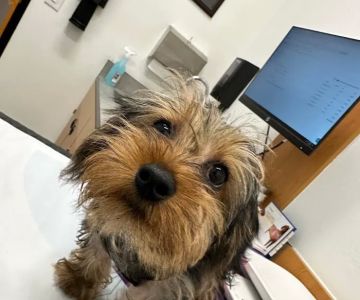How to Prevent Flea Infestations in Pets: Effective Tips and Treatments
- 1. Understanding Flea Infestations in Pets
- 2. Signs of Flea Infestations in Pets
- 3. Top Tips for Preventing Fleas in Pets
- 4. Flea Treatment Options for Pets
- 5. Natural Remedies for Flea Prevention
- 6. How to Protect Your Home from Fleas
Understanding Flea Infestations in Pets
Fleas are tiny, wingless parasites that feed on the blood of animals, and they are one of the most common pests that affect pets worldwide. Fleas can cause serious discomfort for your pets and may even lead to health issues if left untreated. A flea infestation can quickly spread from one animal to another and infest your entire home, making them a nuisance for both your pets and your family.
Fleas thrive in warm, humid environments and can be found in various parts of your home, especially in carpets, bedding, and furniture. They often latch onto pets while they are outdoors or even in public spaces, looking for a warm host to latch onto. Once they have found a host, fleas lay eggs that fall off your pet and into your environment, creating a cycle that makes flea prevention all the more important.
Preventing flea infestations in pets involves regular maintenance, proper treatment options, and ensuring that your home remains flea-free. In the following sections, we will explore the best strategies for keeping your pets free from these pesky insects.
Signs of Flea Infestations in Pets
Detecting fleas early is essential for preventing a full infestation. Here are some common signs that your pet may have fleas:
2.1 Excessive Scratching
One of the first signs that your pet has fleas is excessive scratching. Fleas bite and irritate the skin, causing your pet to itch. If you notice your pet scratching more than usual, it could be a sign that they are infested with fleas.
2.2 Hair Loss or Bald Spots
As your pet scratches and bites at the area affected by fleas, they may lose patches of fur, especially in the regions where the fleas are most active, such as the back, neck, and base of the tail.
2.3 Flea Dirt and Eggs
Flea dirt is the feces of adult fleas and can be seen on your pet’s fur. It appears as small black specks, which may look like dirt or pepper. If you find these specks on your pet, you can check if they turn reddish-brown when wet. These are flea eggs or feces. They often accumulate in areas where fleas tend to gather.
2.4 Visible Fleas
If you closely inspect your pet’s fur, you may spot adult fleas moving around. While they are very small and fast, fleas are visible to the naked eye and can be seen moving along your pet’s coat.
If you observe any of these symptoms, it's crucial to act quickly to prevent further infestation and ensure your pet’s health and comfort.
Top Tips for Preventing Fleas in Pets
Preventing flea infestations in pets requires both proactive and consistent efforts. Here are some top tips to help you protect your pets from fleas:
3.1 Regular Flea Treatments
Using flea treatments regularly is one of the most effective ways to prevent flea infestations. There are various options available, including flea collars, topical treatments, and oral medications. Consult your veterinarian to determine the best treatment plan for your pet based on their age, size, and any existing health concerns.
3.2 Keep Your Pet’s Environment Clean
Regularly cleaning your pet’s living environment can significantly reduce the risk of flea infestations. Vacuum your home frequently, especially in areas where your pet spends the most time, such as their bed and favorite resting spots. Wash their bedding, toys, and any fabric they come into contact with to remove any potential flea eggs or larvae.
3.3 Limit Outdoor Exposure
While pets love to roam outdoors, exposure to areas where fleas are common, such as tall grass, wooded areas, and other animal habitats, can increase their chances of getting fleas. Limit your pet’s outdoor time to reduce the likelihood of them encountering fleas. If your pet does spend time outside, make sure they are treated with flea prevention products beforehand.
3.4 Regular Vet Check-ups
Routine visits to the veterinarian are crucial for preventing flea infestations. During these check-ups, your vet can perform flea checks, recommend treatments, and offer advice on how to prevent fleas from becoming a problem in the first place. Early detection is key to preventing a full-blown infestation.
Flea Treatment Options for Pets
If your pet already has fleas, it’s important to treat them quickly to prevent further complications. Fleas can cause skin infections, allergic reactions, and even transmit diseases. Here are some common flea treatment options for pets:
4.1 Topical Treatments
Topical flea treatments are applied directly to your pet’s skin, usually between the shoulder blades. These treatments are fast-acting and can kill fleas quickly. Popular products include Frontline and Advantage.
4.2 Oral Medications
Oral medications, such as Capstar, are another effective option for treating fleas. These pills work by killing fleas quickly and are often used in conjunction with other flea control methods. They are ideal for pets that don’t tolerate topical treatments.
4.3 Flea Collars
Flea collars offer a long-lasting solution to flea control. They are designed to release flea-repellent chemicals gradually, providing ongoing protection for your pet. Some brands also offer water-resistant collars, making them great for pets that spend a lot of time outdoors.
Natural Remedies for Flea Prevention
If you prefer natural methods for flea prevention, there are several options that can help deter fleas without the use of harsh chemicals. These remedies can be used alongside traditional flea treatments for added protection:
5.1 Essential Oils
Certain essential oils, such as lavender, eucalyptus, and cedarwood, are known for their flea-repellent properties. Diluted essential oils can be applied to your pet’s collar or bedding. Always consult your vet before using essential oils, as some may be toxic to pets when used incorrectly.
5.2 Diatomaceous Earth
Diatomaceous earth is a natural, non-toxic powder that can be sprinkled in your pet’s bedding and areas where they spend time. It works by dehydrating and killing fleas upon contact. It is safe for pets and humans but should be used with caution to avoid inhalation.
5.3 Herbal Flea Sprays
Herbal flea sprays made from natural ingredients like neem oil, peppermint, and citronella can help repel fleas. These sprays are safe to use on your pet’s fur, as well as in their environment.
How to Protect Your Home from Fleas
Preventing fleas in your home is just as important as protecting your pet. Fleas can easily spread through your living environment, so it’s essential to take steps to keep your home flea-free:
6.1 Vacuum Frequently
Vacuuming your home regularly is one of the best ways to remove fleas, eggs, and larvae from carpets, furniture, and floors. Make sure to dispose of the vacuum bag immediately after each use to prevent reinfestation.
6.2 Wash Bedding and Fabrics
Wash your pet’s bedding, toys, and any fabric they come into contact with regularly in hot water. This will kill any fleas or eggs present and help prevent them from infesting your home.
6.3 Use Flea Traps
Flea traps can be placed around your home to attract and capture fleas. These traps use light and heat to lure fleas, where they are then stuck to a sticky surface. They are an excellent tool for monitoring flea populations and catching any remaining fleas.











